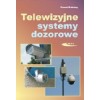- Out-of-Stock



3.2D soldering tip, flat screwdriver 5.5mm in diameter, for WEP 926 soldering station
No product available!
No product available!
No product available!
No product available!
No product available!
No product available!
Transparent housing for Arduino UNO and Leonardo, open from the sides, upper plate with holes for shield connectors and ICSP connector
No product available!
No product available!
Cable with USB type A, microUSB type B, Lightning oraz USB type C connectors, charging only, cable length 1.8m. LANBERG
No product available!
No product available!
5 megapixel camera module compatible with Coral Dev Board. Connects via the MIPI-CSI interface. Coral Camera
No product available!
No product available!
Assembled LED strip driver with timer. AVT1867 C
No product available!
ROSA3D filament made of high-quality polycarbonate with polybutylene terephthalate. 1 kg of 1.75 mm filament is wound on the spool. ROSA3D PC-PBT Black
No product available!
No product available!
No product available!

